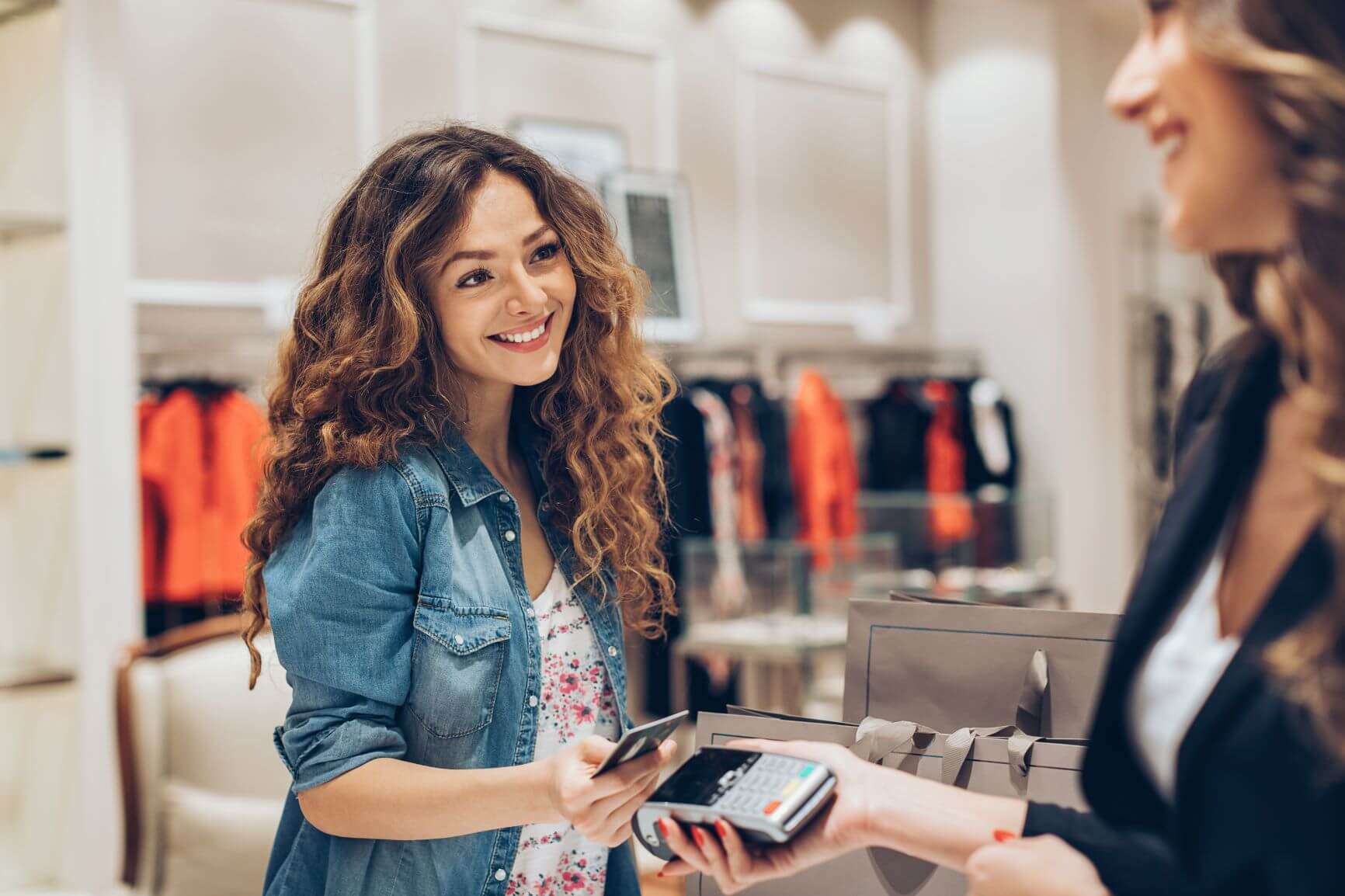How to improve customer experience in retail stores
by Rotageek on 1 August 2025

There’s no doubt that the retail industry has been hit hard by the pandemic. With reduced footfall and decrease in disposable income, the high street has been presented with its biggest challenge yet.
Most retailers have had no choice but to invest in their e-commerce operations during the last few months. As shops shut for lockdown and online sales peaked, the focus shifted to delivering the digital customer experience.
But as brick and mortar stores welcome back loyal shoppers in a post-Covid world, retailers are faced with a new obstacle. With social distancing regulations, sanitation and mask wearing guidance still in place - how can we continue to improve retail customer experience?
The need to attract customers to physical stores - and make the experience worth the visit - has never been more prominent.
What is retail customer experience?
A retail customer experience is the overall journey your customers have from the moment they see your store to the moment they leave. This includes the exterior branding, each touchpoint within the store and every interaction with a staff member. It sums up their browsing experience, purchasing and the packaging.
This doesn't stop in store. When it comes to e-commerce, the customer experience is different but no less important. Rather than a physical store, your digital shop must be smooth to browse, use and purchase from - with a friendly team ready and waiting to quickly deal with any queries or technical difficulties.
What is the importance of customer experience in retail?
According to a recent Price Waterhouse Cooper study, 73% of shoppers said retail customer experience is more important to them than price, or quality. Not only did they find a positive experience more influential than advertising, over 40% were even willing to pay more for it to be friendly and welcoming.
A great customer experience leads to widespread word of mouth recommendations, social sharing and loyal customers in the long term. It helps you to stand out from competitors, develop personalised relationships with customers and even contributes to better employee engagement. Because more happy customers makes a much more pleasant place to work.
An effective retail customer experience strategy leads to:
-
increased customer loyalty
-
better reviews, NPS score and customer brand representatives
-
a boost in sales and employee engagement
It goes without saying that customer experience is perhaps the most important consideration for retail stores - particularly in 2021.
So what makes great retail CX in 2021?
Naturally customer service is our main concern. Whilst there are many trends concerning in-store experiences such as social media opportunities, pop-up concepts and immersive design, your employees’ representation of your brand is the most influential factor.

How to improve customer experience in retail stores
With the help of retail CX technology and the multitude of creative solutions on offer, there are unlimited opportunities to elevate your customer experience. Primarily, the customer experience needs to be seamless from start to finish, finding improvements for smoother transactions and online interaction.
As a starting point, your customer experience strategy should begin by analysing the journey from store arrival to post-purchase. Ask yourself the following questions; are your customers engaging with your employees? Are there opportunities to interact with your products and services? Is your store inclusive and accessible? Can the experience be enjoyed on and offline?
These key touch points are necessary to ensure your brand is prominent throughout the customer experience in retail.
An inclusive in-store
Whilst most high street stores are now accessible, there is still a lot to do to support visually-impaired or vulnerable customers.
Since the introduction of supermarket shopping hours for the elderly, vulnerable and healthcare workers, many retail stores have begun introducing this scheme into their everyday operations. Other retailers are investing in further innovative ways to cater for their customers.
Aldi recently announced a partnership with the Royal National Institute of Blind People (RNIB) to help partially-sighted customers maintain social distancing in store. A traffic light entry system uses a series of beeps to alert when it is safe to enter and is being trialled with the hopes of becoming a permanent solution as long as the measures are in place.
Spar has also committed to supporting their vulnerable customers by working with the Alzheimer’s Society to train over 7,000 employees. Dementia friends badges are worn to show their understanding of the condition and ability to help. The retailer has also worked with the RNIB to input best practice guidelines for supporting partially-sighted customers.
The future is contactless
As found in our recent study on the state of retail, staff protection is a top priority for customers, whilst decontamination and deep cleaning is a new normal for all high street retailers. Yet a simple way to cater for new safety requirements and optimise the customer experience is through contactless technology.
According to Capgemini’s recent study, 59% of customers would rather use voice interfaces or facial recognition to avoid touch-based systems, with 73% of retailers believing this will surge post-pandemic.

Already, major players including Marks & Spencer, Co-op and Sainsbury’s are rolling out ‘Mobile Pay Go’ systems to streamline a contactless grocery experience, whilst voice-ordering technology has been adopted by the likes of Starbucks and McDonalds.
The next six months will be critical for organisations as they begin to reassess the customer journey and utilise contactless technology in their brick and mortar stores. Mobile payments and mobile-centric experiences are already essential, contributing to shorter wait times and a seamless in-store experience. Whilst continual consideration of customer feedback will be necessary - as well as data and privacy concerns - contactless technology will have a direct effect on bringing back shoppers to stores.
Localised experience in-store
Have you ever wandered into a different Zara store and noticed that the product range is different from your local outlet? That’s because the fashion giant invests in providing localised shopping experiences - and the benefits are clear to see.
With the ever-growing focus on supporting independent brands and receiving personalised service, localisation is no longer just a trend but a pillar that needs to appear in any customer experience strategy.

By analysing the products most relevant for each store location and stocking products that customers seemingly want at a local level, you can dramatically optimise operational efficiency, reduce returns and increase sales. With Zara’s renowned success, more major retailers are taking inspiration including Sephora who will focus on localising 400 stores in the next year and H&M who stock according to data pulled from receipts and loyalty cards.
By gaining better insights into customer behaviour, retailers can boost brand loyalty and provide a streamlined, relevant customer experience.
A trusting and caring company
Over the last year, customers have begun to re-evaluate their spending habits and consequently the brands they give their money to. Whilst sustainability has now long been a key concern, awareness of social responsibility has had a tremendous effect on purchasing.
According to McKinsey & Company’s latest survey, 64% of customers choose to specifically buy from socially responsible brands - a figure that has grown more than most in recent years.
Retailers not only need to consider their environmental impact but also the way they look after their employees, contribute to their local community and treat their customers from a diverse range of backgrounds. This will have a direct impact on the longevity of brand loyalty in the retail landscape.
Consider convenience
With the ever-growing list of competition and therefore choice of retailers available comes the need for optimum convenience. 45% of shoppers admit to abandoning an online basket because delivery time was too long. And they’re just as unforgiving offline. Slow service, lack of stock or confusing store layouts are just some of the friction points that turn a customer away from a store.
Aside from customer journey mapping, inventory control is a crucial step in ensuring a smooth retail experience. At a time where demand has experienced unpredictable peaks, real-time stock visibility is crucial in maximising sales opportunity.

Adequate staff is another pain point that requires addressing. In our research study of UK-based retail decision-makers, 43% of retailers said not being able to correctly predict the number of staff they need has made employees less able to give attention to good customer service. As a result, the number of complaints from customers had increased. Likewise, almost a third (29%) of those surveyed say it has actually caused them to lose sales because they couldn’t meet customer demand. If these findings alone weren’t enough cause for concern, one-third reported their customer service levels had dropped behind their competitors, because they failed to predict staffing.
A workforce management tool such as Rotageek plays a significant role in breaking free from this crucial issue and has a direct effect on improving your in-store experie.
Learn more about how you can optimise your employee scheduling and improve your customer experience with our data-driven platform at Rotageek.
- Quick links
- Log In
- Book a Demo
- Help Centre
- Products
- Digital Scheduling
- Autoscheduling
- Forecasting
- Company
- Our Story
- Careers
- Blog
- Privacy Policy